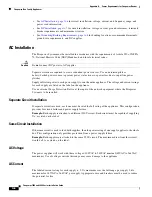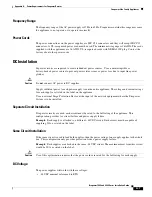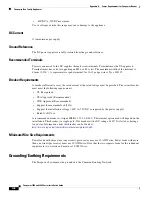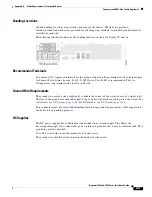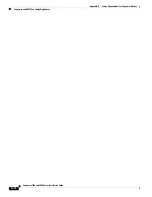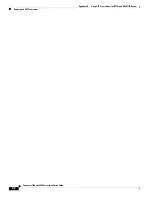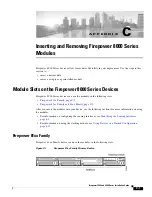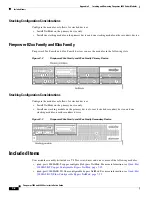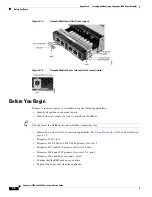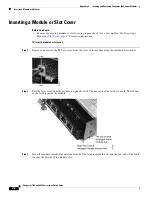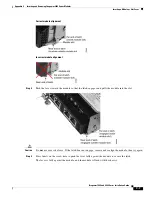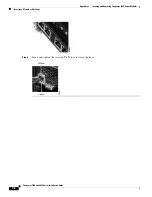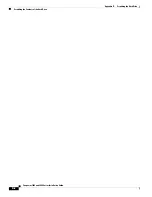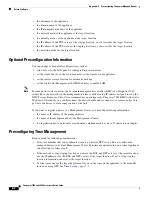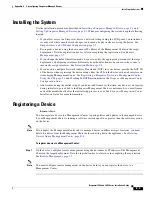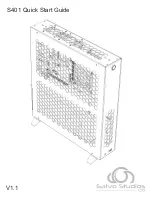
B-2
Firepower 7000 and 8000 Series Installation Guide
Appendix B Using SFP Transceivers in 3D71x5 and AMP7150 Devices
Inserting an SFP Transceiver
Sample SFP Transceivers
The 3D71x5 and AMP7150 can support up to eight SFP transceivers in any combination of three
formats:
•
SFP-C-1: copper transceiver
•
SFP-F-1-SR: short range fiber transceiver
•
SFP-F-1-LR: long range fiber transceiver
Use only Cisco SFP transceivers in the 3D71x5 and AMP7150. Non-Cisco SFP transceivers can jam in
the socket and can cause permanent damage to the transceiver, the chassis, or both.
You can insert or remove transceivers while the device remains functioning. Refresh the user interface
on the Management Center to see the change in configuration.
SFP transceivers do not have bypass capability. Use these transceivers in a passive deployment or an
inline deployment where you want your device to stop all traffic if the device fails or loses power (for
example, virtual switches, virtual routers, and some access control policies).
For a passive deployment, you can use any combination of transceivers in up to eight sockets to monitor
up to eight network segments. For an inline deployment, you can use any combination (copper, fiber, or
mixed) of transceivers in vertically sequential sockets (5 and 6, 7 and 8, 9 and 10, or 11 and 12) to
monitor up to four network segments.
Use the Management Center that manages your device to configure the ports on the transceivers.
Inserting an SFP Transceiver
Use appropriate electrostatic discharge (ESD) procedures when inserting the transceiver. Avoid touching
the contacts at the rear, and keep the contacts and ports free of dust and dirt.
Caution
Do not force an SFP transceiver into a socket as this can jam the transceiver and can cause permanent
damage to the transceiver, the chassis, or both.
To insert an SFP transceiver:
Step 1
Taking care not to touch the contacts in the rear, use your fingers to grasp the sides of the bale and slide
the rear of the transceiver into a socket on the chassis. Note that sockets on the upper row face up and
sockets on the lower row face down.

